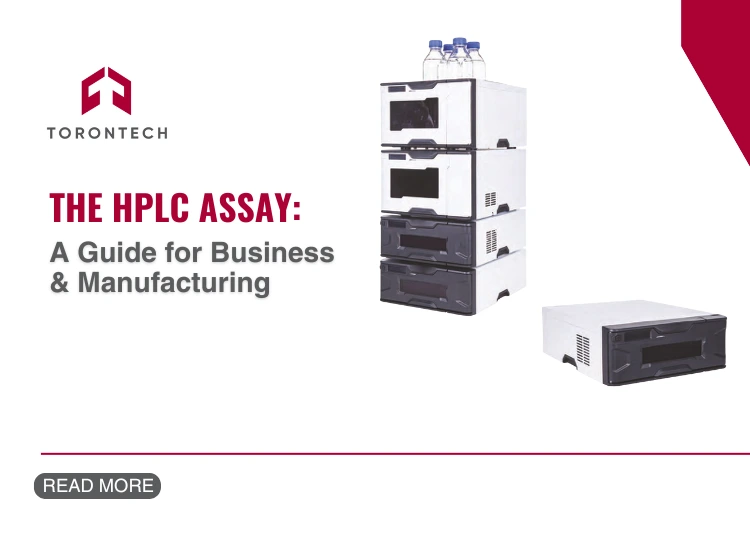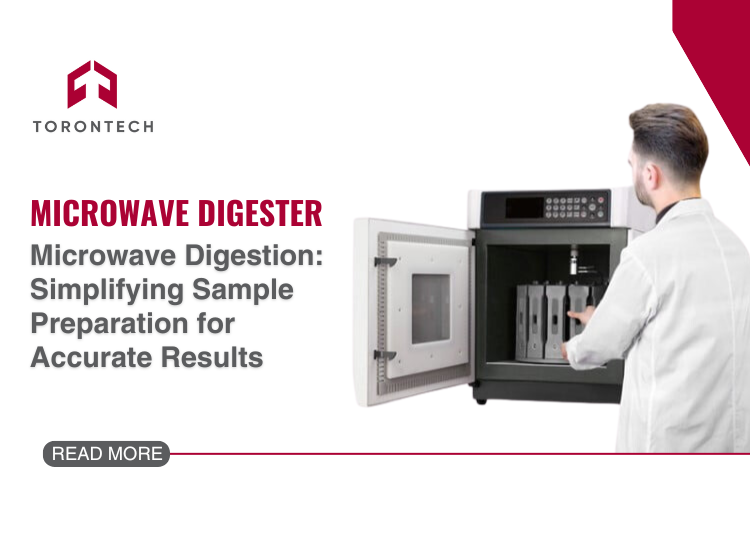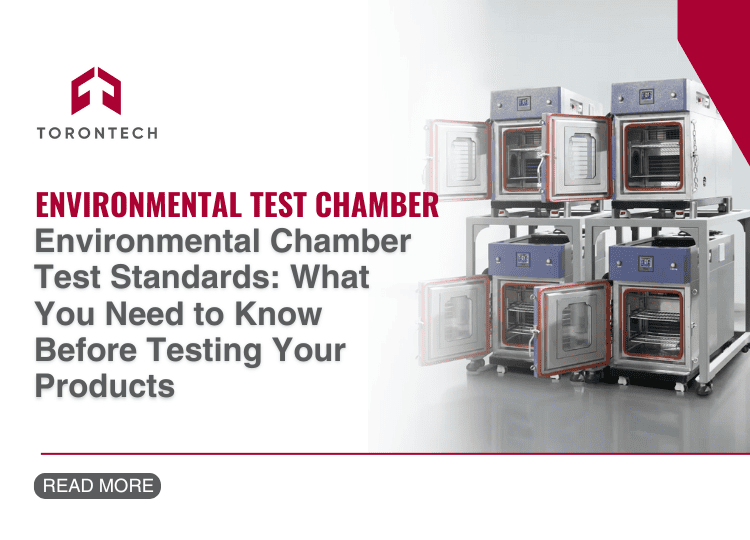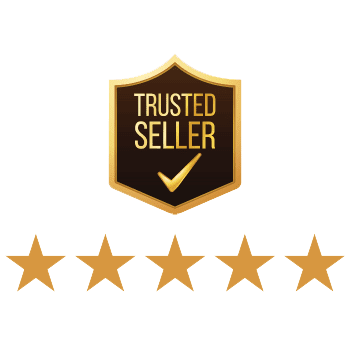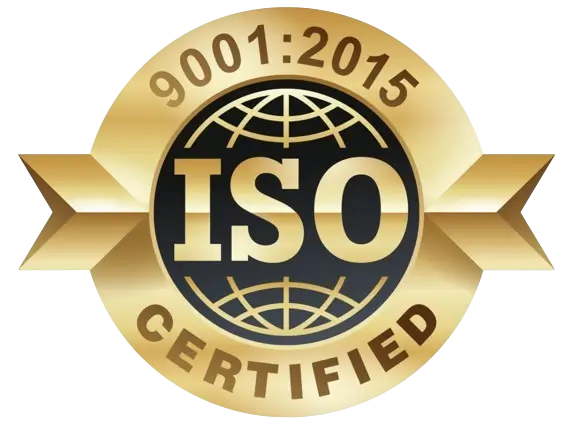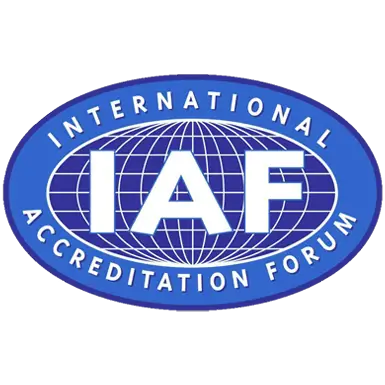In the manufacturing space, if you’re not using an HPLC assay for quality verification, you’re operating with a significant blind spot. We are firm in our belief that for any business making products people depend on, brand integrity and financial stability are built on knowing exactly what is in your final output.
An HPLC assay is the instrument that delivers that essential information. While it’s a critical tool, we also believe that this level of quality control should not be prohibitively expensive.
What is an HPLC Assay?
First, a straightforward assay HPLC definition. HPLC is the analytical machine that effectively isolates each ingredient in a mixture into separate, measurable streams. The HPLC assay itself is the specific test that quantifies your key ingredient with high precision.
It is fundamentally a quantitative test focused on answering one question: “How much of our main ingredient is in this sample?” This makes it distinct from a purity analysis, which answers a different question: “What else is in here besides our main ingredient?”
For example, imagine your company manufactures 500 mg Vitamin C tablets. The tablet isn’t just pure Vitamin C; it also contains binders and fillers. The HPLC assay is the procedure that separates the active Vitamin C from those other ingredients and measures its exact amount.
This test answers the critical business question: “Does this tablet actually contain 500 mg of Vitamin C, or is it 480 mg?” This makes the assay HPLC definition one of practical, bottom-line importance for verifying your product meets its label claim.
The Calculation That Drives Results: Assay Formula for HPLC
So how do you translate the machine’s output into a hard number? Through a clear-cut calculation. We have consistently found that a well-managed external standard method provides the most dependable data. This is where the assay formula for HPLC becomes critical.
The typical assay formula for HPLC analysis is structured as follows:
Assay (%) = (Sample Peak Area / Standard Peak Area) x (Standard Weight / Sample Weight) x Standard Purity
Let’s make this real with another Vitamin C example. A lab technician might:
- Precisely weigh out a sample of the crushed tablets (let’s say 100 mg).
- Precisely weigh out a pure reference standard of Vitamin C (let’s say 25 mg).
- Run both on the HPLC. The machine reports a peak area for the standard (500,000) and for the sample (1,980,000).
- Know the standard’s purity is 99.5%.
Plugging this into the assay formula for HPLC:
Assay = (1,980,000 / 500,000) x (25 mg / 100 mg) x 99.5%
Assay = 3.96 x 0.25 x 99.5%
Assay = 98.5%
This result tells the business that their manufacturing process is producing tablets with 98.5% of the claimed potency.
The Business Impact of This Analysis
This process is about far more than just generating data points. Implementing a stringent HPLC assay strategy has a direct and measurable effect on critical business outcomes.
- Prevents Significant Financial Loss: Identifying an issue early prevents an entire production run from being rejected. The return on investment for an accessible, cost-effective HPLC assay system becomes remarkably clear when measured against the high cost of a single failed batch.
- Improves Operational Throughput: These machines can execute tests with impressive speed. This is where the reliability of your instrumentation is key to getting the most out of every HPLC assay.
- Fortifies Your Brand’s Reputation: Customers expect consistency. Delivering products that reliably meet their specifications, backed by solid HPLC assay data, builds the kind of brand loyalty that is difficult for competitors to disrupt.
- Ensures You Meet Regulatory Demands: In regulated sectors, you must provide documented proof of quality. HPLC reports, generated from a validated HPLC assay, offer the exact kind of traceable evidence that authorities require.
Applications of HPLC Assays Across Industries
This is not a niche technology; it is a versatile workhorse we see applied across numerous industries, each relying on the precision of the HPLC assay.
- Pharmaceuticals: Their entire quality process is built on the results of a specific HPLC assay for each product, from raw materials to the final dose.
- Food and Beverage: These companies use HPLC to confirm safety by screening for contaminants and to validate nutritional claims with a quantitative HPLC assay.
- Environmental Services: The technology is critical for monitoring our environment, using sensitive HPLC methods to detect and measure pollutants.
- Clinical and Forensic Laboratories: These labs use HPLC to analyze biological fluids for the presence of specific substances.
Developing and Validating Your Method
This is where true analytical expertise comes into play. You cannot simply use a generic test; the method must be optimized to be reliable for your specific product. This is where you design the specific recipe for your HPLC assay.
Following development, you must validate the method—providing objective proof that it is fit for its intended purpose. This validation ensures that the assay formula for HPLC you use will yield consistently accurate numbers. Of course, a validated method is only as dependable as the hardware it runs on, a principle that guides our own engineering.
Common Challenges in HPLC Assays & How to Solve Them
Even in the most well-run labs, operational issues can surface. We find many of these stem from component wear, which directly impacts the reliability of your HPLC assay results.
| The Challenge | Likely Cause | Our Recommended Action |
| System pressure is unstable. | Leak, trapped air, or component wear. | Check all fittings. Degas your mobile phase solvent. |
| Peaks are misshapen. | Column degradation or solvent incompatibility. | Flush the column. Dissolve your sample in the mobile phase. |
| The baseline is noisy. | Contaminated mobile phase or a degrading detector lamp. | Use fresh, high-purity solvents. Check the lamp’s output. |
| Retention times are inconsistent. | Improperly prepared mobile phase or a degrading column. | Prepare mobile phases with precision. Always allow the column to equilibrate. |
Affordable HPLC Assay Systems by Torontech
From understanding the fundamental assay HPLC definition to troubleshooting, the HPLC assay is integral to any manufacturing operation serious about quality.
We understand that acquiring new analytical instruments is a major capital expenditure. At Torontech, our entire business model is built on solving a core dilemma: we believe you shouldn’t have to choose between top-tier analytical capability and your budget.
We specialize in providing cost-effective HPLC solutions engineered to deliver the accuracy your HPLC assay function requires. If you are looking to improve your laboratory’s capabilities, we invite you to review our product offerings.
Contact us, and let’s identify the ideal solution for your business.
Ready to Find the Right HPLC Solution?
Frequently Asked Questions (FAQ)
2. What is the typical throughput for an HPLC assay?
A single HPLC assay can take 10-30 minutes. The real operational efficiency, in our view, is gained from a reliable autosampler.
3. Can we apply one HPLC method across multiple products?
We would strongly advise against this. A separate, fully validated HPLC assay method is necessary for each product to ensure data integrity.
4. What is a "reference standard" and why is it critical?
A reference standard is a certified, ultra-pure sample of your target compound. The accuracy of the assay formula for HPLC is entirely dependent on its quality.
5. What are the core components of an HPLC system?
A complete system has a pump, injector, HPLC column, HPLC detector, and data system. The real challenge, which we've focused on solving, is engineering these core components for long-term reliability within a HPLC assay system that remains cost-effective for your business.

